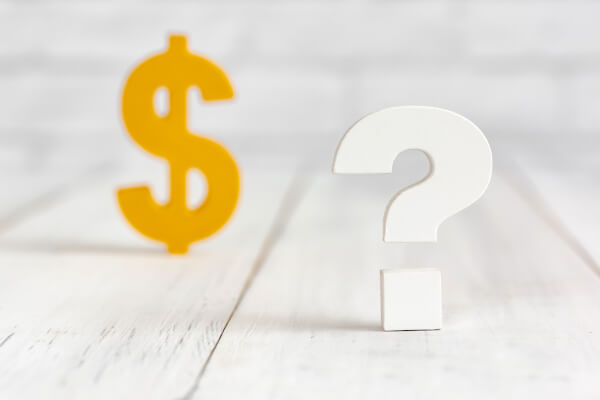Do the right things – better innovation needs Project Portfolio Management
In a previous article I covered how building your project management capabilities will boost your innovation delivery. Whilst being good at project management will ensure you execute innovation projects the right way, you also need to choose the right projects to work on. This is where Project Portfolio Management (PPM) comes in.
If Project Management is about doing things right, Project Portfolio Management (PPM) is about doing the right things.
To be at the top of your innovation game, you should be good at both.
“There are two ways for a business to succeed at new products: doing projects right, and doing the right projects.”
The PDMA Toolbook for New Product Development4
This article will introduce you to PPM and outline the key things to work on if you want to build your PPM capability.
What is Project Portfolio Management?
According to the Project Management Institute, Project Portfolio Management (PPM) is the “centralized management of one or more portfolios that enable executive management to meet organizational goals and objectives through efficient decision making on portfolios, projects, programs, and operations.”5
That’s quite a complex definition. Let’s focus on innovation projects specifically and unpack that in a little more detail.
Firstly, what is a “portfolio”?
A portfolio is basically a collection of projects. And since we’re concerned only with innovation projects, I’m going to refer to an “innovation portfolio”. The projects can be independent of each other or clustered into groups to form “programmes” and if you want more about what programmes are and how they’re different to portfolios see box 1.
BOX 1: Portfolios, programmes and projects
Some projects in a portfolio may be clustered into a “programme” because grouping them like this allows economies of scale, more detailed oversight and decision-making. So Portfolios can contain a mixture of individual Projects and clusters of Projects in Programmes. This article6 goes into more detail and provides examples.
What are “organizational goals and objectives”?
These are the high-level goals and objectives as defined in the company’s strategy. For innovation, these may be sales revenue and profit generated by new products in 3-5 years’ time. It could also be gaining a certain percentage share of a new market through an innovative channel strategy. It can be anything your company decides, the important thing is that the contribution of innovation to the business strategy is clearly defined.
By the way, clarity on the strategic role of innovation is part of what I call “Strategic Fit”, one of the Six Dimensions for innovation success. You can find out more about Strategic Fit here.
What about “efficient decision making on portfolios, projects, programs, and operations”?
Regular decisions and trade-offs need to be made on the projects in an innovation portfolio if it is to stand the best chance of delivering according to the company strategy. Projects may be stopped, adjusted or accelerated. Relative priorities can change and resources re-assigned. Gaps between the business goals and the expected outputs of the current project portfolio may be identified and new projects commissioned.
There are a lot of decisions to be made, so how they are made needs to be clear and efficient.
Decisions have to be made on non-innovation activities too and that’s why ongoing business operations are included in the scope. Why? Because the resources needed to deliver innovation will probably also be needed for running existing operations. For example, if your Sales team is already stretched by managing sales of existing products, they may not be able to cope with a large wave of new product launches. Trade-offs will need to be made both inside and outside the innovation portfolio.
Who are “executive management”?
It’s clear that PPM decisions can have large consequences on the strategic delivery of the company overall. PPM is therefore generally carried out by people with the right seniority, experience and business responsibility – in other words, the senior managers in your company.
So, now that innovation portfolio management is defined, you’ll see that it’s not an easy activity, and it requires commitment of time-pressed senior management. So why do so many companies set up PPM for their innovation portfolios?
Why manage the Innovation Portfolio?
Your company is innovating because it needs to achieve strategic results and some of these results can only be delivered through innovation.
You need to ensure the entirety of your innovation portfolio stands the best chance of delivering the strategic results your business needs and expects.
PPM does this. It connects each project to the company strategy, ensuring you progress the mix of projects that will deliver the innovation results that the company strategy is counting on.
Your company could be great at managing and delivering individual projects, but if you don’t manage the portfolio, it could be great at delivering the wrong projects.
What happens if you DON’T manage the innovation portfolio?
I can’t guarantee that your company will encounter all these issues, but in my experience weak innovation PPM greatly increases the risk that…
Your company tries to run too many innovation projects. Innovation teams are overloaded, projects do not progress as planned due to lack of resources.
Priorities between innovation projects are not clear. Time is wasted and frustration generated discussing which projects get priority treatment.
Even if you deliver most of your projects, you still miss your overall targets for strategic innovation delivery. Usually either because you delivered things not aligned with the strategy or you didn’t have enough “strategically-relevant” innovation in the pipeline in the first place.
How to be good at PPM
By now you’ll get the picture that PPM involves:

(a) regularly getting your senior leaders together to review the entire innovation portfolio

(b) comparing it’s expected delivery vs the strategic objectives

(c) making and implementing decisions on the portfolio that may also impact ongoing non-innovation activities.
While this seems quite straightforward, there are seven elements you need in place if you want to do it well:
The seven keys to PPM success
A note of caution
As with Project Management, your PPM ability will only be as strong as its weakest part. For example, you may have great tools and a clear PPM process, but if your governance is weak you won’t actually implement the best decisions for your company, even if they are obvious to everyone involved.
You don’t need to be best-in-class in everything. You just need to ensure you have a balanced approach across all seven elements, based on the needs of your company.
And as your company evolves, keep checking-in with your PPM capabilities and don’t hesitate to grow them as your needs grow too.
Summing it up…
Good Project Portfolio Management ensures you do the right projects. When you combine this with good Project Management, you will supercharge your innovation delivery.
Innovation PPM is not a simple business capability though. It’s multi-dimensional. To do it well, you need to take strategic decisions, based on a clear view of your project portfolio and it’s potential delivery vs your innovation ambitions. These decisions need to be implemented and communicated clearly and widely across your organisation.
But if you are good at it, you will firmly connect each innovation project to the wider innovation goals of your company. You will also maximise the chances that your innovation pipeline will deliver what your company expects and needs.








